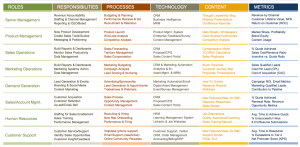The success of any e-commerce store not only depends on the quality of your products but various other factors also play an important role to attract your buyers. Though there are hundreds of tips and tricks out there, we have outlined some basic yet must have things in this article that you should implement before selling online.
1. Shopping cart and Create account Facility

The shopping cart and create an account options are usually found together on the upper right corner of the website. We can’t imagine an e-commerce website without having a shopping cart function. You can use a simple basket as an icon for the shopping cart, however, it’s up to you if you want to change it and make something that reflects your business model.
Create an account option allows your customers to sign up with their own login and password and make the checkout process easy without entering their information again and again when they shop on your website. Some users may find it difficult to create an account and remember their username and password, so placing checkout as a guest will only require enter their information and go ahead with the order.
2. Proper Navigation

Placing your products into categories helps your customers find the product with ease. If you have an apparel e-commerce website, you can create categories like women, men, kids etc. Avoid over categorization and make sure that they are easy to navigate so your customers can find their desired product quickly and hassle free. You can make further subcategories that can help a user/visitor find the product easily without going through all the products listed on the website.
Always highlight your top selling or most popular products on your main page to let your buyers know in the first place about the items they might be interested in. Don’t restrict your customers only to the product they search for, always show the related products to give them several options to choose from. You must have a page for each product with detailed description of the product, price, inclusive or exclusive of tax, shipping cost or any information you think helps a customer decide to place an order on your website.
It is extremely essential for any e-commerce website to organize and manage its category structure and placement on its landing page in a way that is clear, brief but comprehensive and making a proper sense to a user/visitor. Although it depends on the business model, however the ideal placements for category and sub-category should be located on the left side of website’s landing page where other useful tabs should be located just below the header with a search tool bar facilitation that can help visitor/user acquire information quite promptly.
While searching for a desired information/product, website’s URL plays an additional assistance in navigation if a URL is properly structured, reflecting and adhering to the visitor’s journey on the website like: domain.com/category, doman.com/category/subcategory/ etc. This practice enormously promotes good internal linking and make’s your website links search engine friendly and easily accessible by search engine crawlers eventually making optimization more hassle free.
3. Live chat Integration

Customers expect businesses to offer 24/7 customer support and the best way to fulfill this need is to start the live chat service on your website. Live chat agents can help customers find a product quickly so your customers don’t have to go through all the categories to find the product they are looking for. Your customers can get all the information about a specific product including detailed description, pricing structure refund policy etc. in that one chat box without the hassle of going through the details themselves.
Your customers might close your website without knowing about the special promotions on your website, so live agents are the ones who always make sure to update them about the latest promos. Now the question is, which company you should choose for the live chat? Well, that depends on your needs and requirements, however, the live chat service is one of the best on this planet. They have clients in the US, Dubai, Ghana and in some Asian countries and provide 24/7 service.
4. Payment options and ensure safe payment

Which payment method should you choose for your e-commerce store? Well, there are dozens of payment gateways to choose from apart from accepting credit cards like Paypal, Google Wallet, Square etc. Some payment methods are geographic specific, so you need to research before deciding which payment option to add.
Give your customers a safe e-commerce platform, they tend to leave the website immediately if they find any website vulnerable to security threats. So always set up a secure connectivity by using SSL certificate, establish two factor authentication and do mention your privacy policy in the footer of your website.
5. FAQ section

Your customer may have several questions before they shop on your website. So how would you know what the questions are? Think like a buyer, ask yourself those questions, list them on a piece of paper, answer them and add on your website in the FAQ (Frequently Asked Question) section. It’s like a self-help area to answer some common questions most of your customers might have. Combine your FAQ section with the contact us form, this will help your customers to ask that is not answered in your FAQ section.
6. Call to Action

Call to action on an e-commerce website tells your buyers what to do after they have decided to buy a product. The most common and important CTA on an e-commerce website is to put a “Buy Now” button on every page of your product. However, you can add some other call to actions depending on your business goals like filling out contact us form for more information and placing banners or pop ups to tell buyers about discounts or other special offers. .
7. User Generated Reviews

If you think your products are better than your competitors, let your existing customers tell the same to your prospect buyers. User generated reviews help a potential customers find the negatives/positives and give a true picture of your product. Advertising through your customers is the best method to promote your products and building trust in your brand. Encourage your buyers to leave a review after they buy a product from your website.
Every single product that is indexed on your website store should have a review section/tab and a rating option placed in the product’s decryption that can be viewed by the prospects. However, “write a review” option should only be accessible to registered users/clients only.
8. Writing Blogs

Blogs, no doubt is an essential part of any e-commerce website. You can use blogs to give more information about the products you have to offer. They help you in a number of ways like generating traffic to your website, keep your customers informed about the latest promotions and building your brand image. You can write blogs on various topics like revealing secrets of the industry you are in, your business history, providing solution to a problem your customer is facing or anything you know would be good to engage your audience. Make sure every blog you publish will contribute towards branding of your store and reflect your product’s awareness which eventually will increase your sales.
Engaging traffic these days needs a tact full approach and further its proper execution carries an essential weight age. Stats proved that adopting to modern blog’s engaging traffic strategies and techniques have dramatically improved the communication process with target audience, hence gagging a good number of traffic to your account. Few of the techniques involved are targeting your content that your audience would mostly like share, participating in the forums and communities where audience is already in abundance, making your blog’s content SEO friendly.
Using Twitter, Facebook and Google plus to share your posts and making new connections, installation of analytics and paying more attention to results, using info-graphic techniques in your blogs, conducting a keyword research when writing your blog, referring to your posts or others in your blogs consistently, guest blog can also make a huge difference, incorporating a state of the art design into your website, interaction on other blogs and leaving reference to your own, enabling subscription vie email + feed and track them, using your email connections and signatures to promote your posts and your blog overall, surveying your readers and adding a value to any popular topic/conversation etc.
Digital & Social Articles on Business 2 Community(46)








